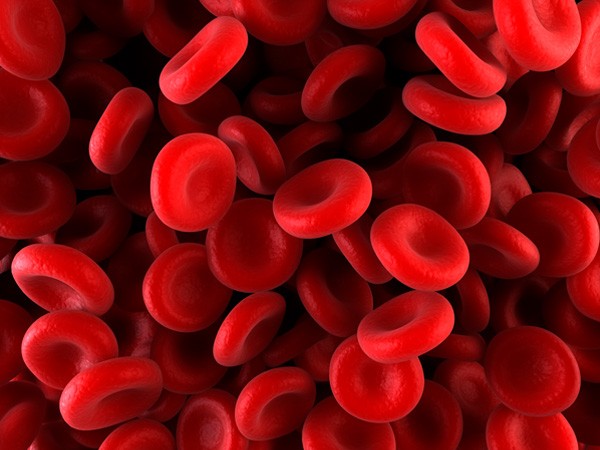
Hemophilia is a rare genetic disorder characterized by the inability of blood to clot normally, leading to prolonged bleeding. It is a lifelong condition that requires careful management and treatment to prevent complications.
The Anatomy of Hemophilia
Hemophilia is primarily caused by a deficiency in clotting factors, specifically Factor VIII (hemophilia A) or Factor IX (hemophilia B). These clotting factors are essential for the blood to form clots and stop bleeding when blood vessels are injured. Without adequate levels of these clotting factors, individuals with hemophilia experience difficulty in forming clots, resulting in prolonged bleeding episodes.
The Inheritance Factor: Genetics of Hemophilia
Hemophilia is typically inherited in an X-linked recessive pattern, meaning that the gene mutation responsible for the disorder is located on the X chromosome. Since males have only one X chromosome (XY), they are more likely to inherit hemophilia if their mother carries the gene mutation. Females, on the other hand, have two X chromosomes (XX), so they are usually carriers of the gene mutation and may pass it on to their children.
Types of Hemophilia
There are two main types of hemophilia: hemophilia A and hemophilia B. Hemophilia A is caused by a deficiency of Factor VIII, while hemophilia B is caused by a deficiency of Factor IX. The severity of hemophilia can vary depending on the level of clotting factor present in the blood. Individuals with severe hemophilia have very low levels of clotting factor and are more prone to spontaneous bleeding, while those with mild or moderate hemophilia may only experience bleeding after injury or surgery.
Symptoms of Hemophilia
Common symptoms of hemophilia include excessive bleeding from minor injuries, prolonged bleeding after surgeries, and spontaneous internal bleeding. External symptoms may include large bruises (hematomas), joint pain and swelling due to bleeding into the joints (hemarthrosis), and prolonged nosebleeds. Internal bleeding can occur in the muscles, joints, and other organs, leading to serious complications if not promptly treated.
Severity Levels of Hemophilia
Hemophilia can be classified into three severity levels: mild, moderate, and severe. The severity is determined by the amount of clotting factor present in the blood. Individuals with severe hemophilia have less than 1% of the normal clotting factor levels and are at the highest risk of spontaneous bleeding. Those with moderate hemophilia have 1% to 5% of normal clotting factor levels, while those with mild hemophilia have 5% to 40% of normal clotting factor levels.
Diagnosis and Screening
Diagnosing hemophilia often involves blood tests to measure clotting factor levels and assess the blood's ability to clot. Genetic testing may also be performed to identify the specific gene mutation responsible for hemophilia. Screening for hemophilia is recommended for individuals with a family history of the disorder or those who exhibit symptoms such as prolonged bleeding or easy bruising.
Treatment Options
Treatment for hemophilia aims to prevent bleeding episodes and manage symptoms. The primary treatment involves replacing the missing clotting factor through regular infusions of clotting factor concentrates. These infusions can be administered on a prophylactic basis to prevent bleeding or on-demand to treat bleeding episodes as they occur.
Prophylactic Treatment
Prophylactic treatment involves regular infusions of clotting factor concentrates to maintain adequate levels of clotting factor in the blood and prevent bleeding episodes. This approach is particularly beneficial for individuals with severe hemophilia who are at a higher risk of spontaneous bleeding. Prophylactic treatment can help reduce the frequency and severity of bleeding episodes, as well as minimize long-term complications such as joint damage.
On-Demand Treatment
On-demand treatment is administered to control bleeding episodes when they occur. This typically involves infusions of clotting factor concentrates at the first sign of bleeding or injury. On-demand treatment is essential for managing acute bleeding episodes and preventing complications such as excessive blood loss and damage to organs and tissues.
Complications and Challenges
Complications of hemophilia may arise from prolonged bleeding episodes and inadequate treatment. Chronic joint damage is a common complication, particularly in individuals with frequent joint bleeds. Muscle bleeds can also occur, leading to pain, swelling, and reduced mobility. In severe cases, life-threatening bleeding episodes may occur, particularly in the brain or other vital organs.
Living with Hemophilia
Living with hemophilia requires ongoing management and support to maintain overall health and well-being. This includes regular medical care, adherence to treatment plans, and monitoring for potential complications. Physical therapy and exercise are also important for preserving joint function and mobility, as well as reducing the risk of bleeds.
Support Networks
Support networks and advocacy groups play a crucial role in providing resources and support for individuals and families affected by hemophilia. These organizations offer educational materials, financial assistance programs, and opportunities for social interaction and peer support. By connecting with others facing similar challenges, individuals with hemophilia can find encouragement, advice, and solidarity in their journey.
Advancements in Treatment
Recent advancements in treatment offer promising prospects for improving the management of hemophilia and potentially finding a cure. Gene therapy, in particular, holds great potential for correcting the genetic mutation responsible for hemophilia and restoring normal clotting function. Clinical trials are underway to evaluate the safety and efficacy of gene therapy approaches, with encouraging results reported thus far. In conclusion, hemophilia is a complex genetic disorder characterized by impaired blood clotting, leading to prolonged bleeding episodes. While there is currently no cure, ongoing research and advancements in treatment offer hope for improved management and potentially a cure in the future. With early diagnosis, comprehensive care, and support from healthcare providers and advocacy groups, individuals with hemophilia can lead fulfilling lives and minimize the impact of the condition on their daily activities.
3 amazing technologies that made car parking easier
Everest will be launched, not Ford Endeavour, will Fortuner's glory end?
Electric version of this popular SUV is coming, will run 500km on full charge!